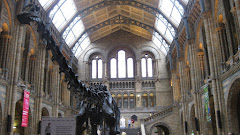· A few years ago I read a book, Devil in the White City by Erik Larson, about the 1893 Chicago World’s Fair, which showed both the brilliancy and darkness of the modern city. The fairgrounds, the awing “White City,” displayed advances of humankind (including America’s counterpart to the Crystal Palace and the Eiffel Tower—the Ferris wheel), but it also harbored the darkest manifestation of the urban environment, a serial killer, H. Holmes, who used the anonymity and the sheer size of Chicago during the World’s Fair to find his victims. Did the Great Exhibition have a similar dark side, if not of crime then of imperialist or class injustice? From what we’ve learned, the Great Exhibition actually seemed very progressive and egalitarian: all countries were invited to show their cultural richness and industrial strength, and all classes were welcome to experience the Exhibition, through low priced days. There was even a designated time for the infirm to visit. True, the displays of Turkish and Indian grandeur could be seen as imperialist boasting—the world at London’s fingertips and under its thumb—and even Albert’s rhetoric about the exhibition, that it would serve to promote “the unity of mankind,” holds a possible imperialist interpretation—unity under whom? But the Great Exhibition seemed to be more about the optimism of the mid-Victorians, the wonderful possibilities that this “period of most wonderful transition” would hold for the city outside, whose smoky disorder teeming with poverty and disease must have seemed a world away from the rational order and beauty of the Crystal Palace.
Wednesday, 1 July 2009
Subscribe to:
Post Comments (Atom)

No comments:
Post a Comment